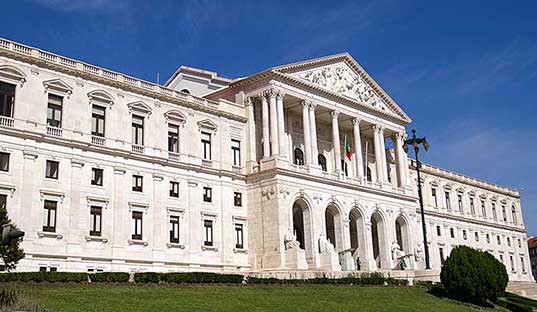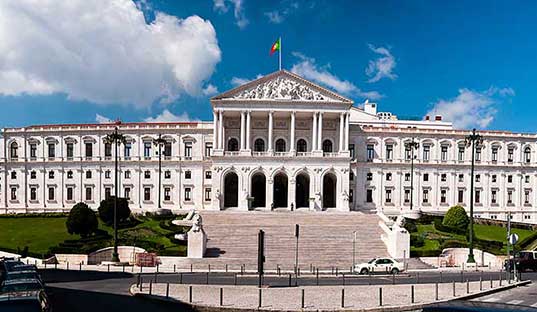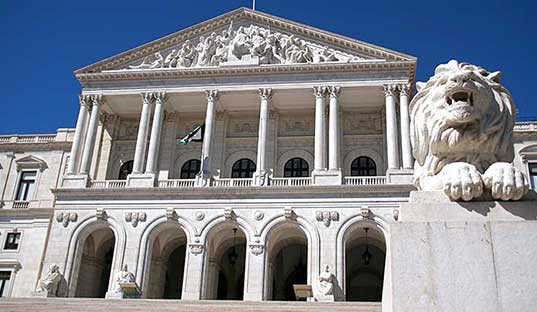Palácio de São Bento
The São Bento Palace is also known as the 'Republic Assembly' or 'Portuguese Parliament'. This is the place where the country's future is decided by the politicians who are elected for a four year period.
São Bento Palace originates from the first Benedictine monastery built in Lisbon in 1598. In order to give shelter to a growing religious community and to be closer to the urban nucleus, the monastery was moved to another location. The works on the building weren't yet completed when the earthquake of 1755 caused serious damage to the monastery. But it was the 1820 Liberal Revolution and the extinction of the religious orders in 1834 that led to the installation of the Parliament in São Bento Palace.
The outside stairs were built in 1941 and are flanked by two lions, symbolically used as sentinels. On the main facade, and above the stairs, there is an arcade where you can read the Latin word 'Lex' - in allusion to the Assembly's area of operation - and four female allegorical statues - 'Prudence', 'Justice', 'Strength' and 'Moderation'.
The Pediment located above the veranda is 30m long and 6m high and the tympanum was decorated by the sculptor Simões de Almeida according to the aesthetics academically used in the School of Arts where he taught. This tympanum represents the New State, with the Nation in the middle symbolised by the Latin insignia 'Omnia Pro Patria' (All for the Nation) surrounded by 18 images representing, amongst other themes, Industry and Commerce.
São Bento Palace originates from the first Benedictine monastery built in Lisbon in 1598. In order to give shelter to a growing religious community and to be closer to the urban nucleus, the monastery was moved to another location. The works on the building weren't yet completed when the earthquake of 1755 caused serious damage to the monastery. But it was the 1820 Liberal Revolution and the extinction of the religious orders in 1834 that led to the installation of the Parliament in São Bento Palace.
The outside stairs were built in 1941 and are flanked by two lions, symbolically used as sentinels. On the main facade, and above the stairs, there is an arcade where you can read the Latin word 'Lex' - in allusion to the Assembly's area of operation - and four female allegorical statues - 'Prudence', 'Justice', 'Strength' and 'Moderation'.
The Pediment located above the veranda is 30m long and 6m high and the tympanum was decorated by the sculptor Simões de Almeida according to the aesthetics academically used in the School of Arts where he taught. This tympanum represents the New State, with the Nation in the middle symbolised by the Latin insignia 'Omnia Pro Patria' (All for the Nation) surrounded by 18 images representing, amongst other themes, Industry and Commerce.














